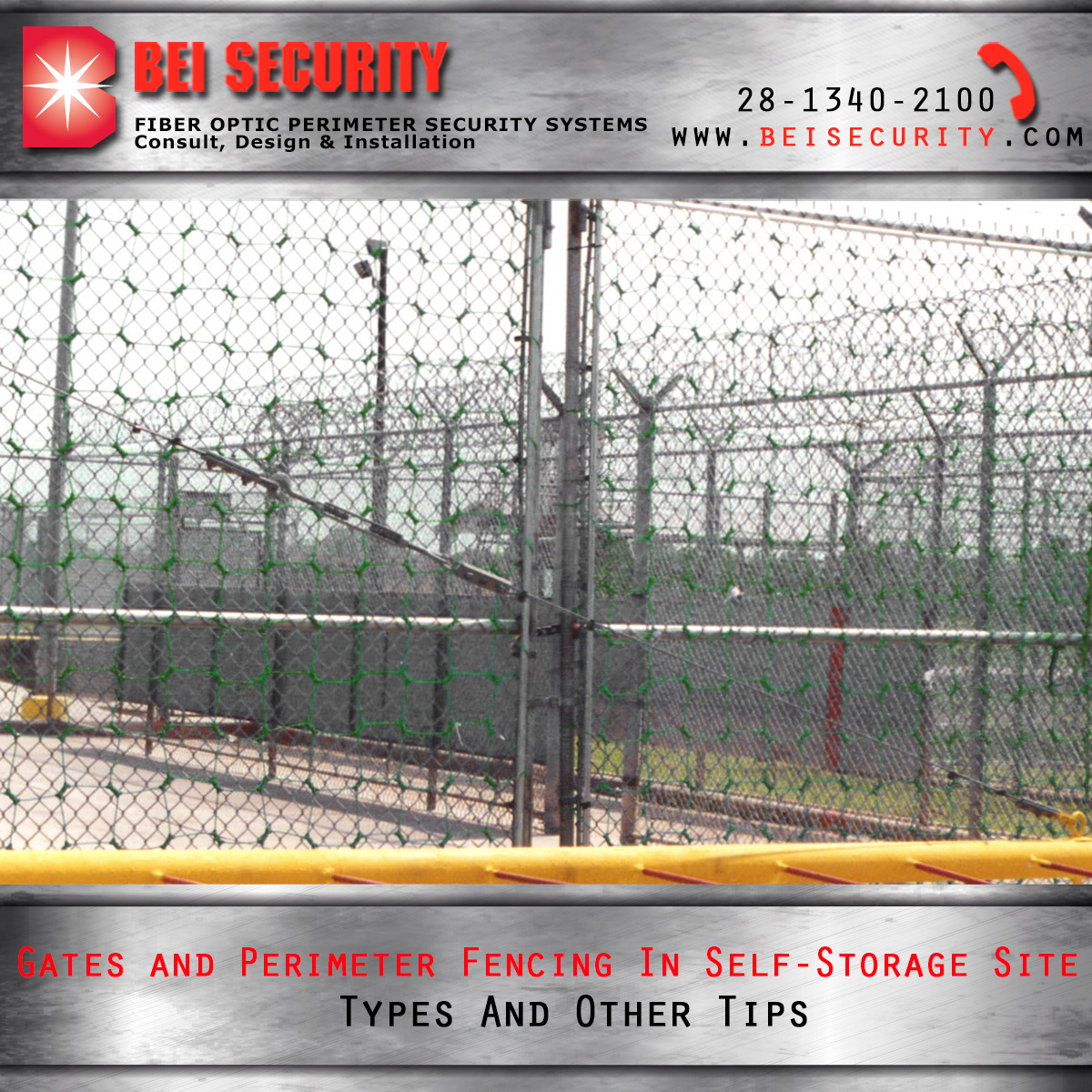
Gates and Perimeter Fencing In Self-Storage Site
Types And Other Tips
Gates and perimeter fencing are some of the most important components of a well-designed self-storage site. In most cases, they are the first things your drive-by customer will see and, therefore, make an impression. When used correctly, they add beauty and attract the eye of anyone who passes by.
Perimeter fencing can be kept to a minimum by having the buildings back up to the property boundaries wherever possible. Then only panels between them are necessary to enclose the project. This can save on fence costs and create a more appealing look.
Fence Types
The three basic choices for fence type are chain-link, wrought iron and wood. Wood is probably the least desirable because of wear and tear; but it could be used between buildings around the property to limit visibility.
Chain-link fencing is sturdy and allows for visibility into the complex. Heavy-duty, 9-gauge wire mesh should be used. Many sites will combine chain-link around the sides and back, with wrought iron across the front. Again, this provides a better appearance to the drive-by prospect.
Wrought iron has a nice ornate look. It adds a certain amount of class to catch the eye. Generally, local ordinances will restrict the use of pickets or barbed wire on top.
Wrought iron is the most expensive of the three styles. For projects being done in phases, wrought iron can be floated along the lines that will need to be moved. This will allow for easy movement when the next phase is built. Keep in mind, because the fence panels are mounted perpendicular to the posts, it is more difficult to follow the contour of a slope. Only necessary posts are cemented. The rest are simply set in the hole and filled with dirt or rock.
Gate Types
There are four basic types of automated drive gates: barrier arms, swing gates, vertical-lift gates, and slide or roll gates. Of the four, barrier arms are the least likely to be used in self-storage. These are simply arm gates similar to those used for railroad crossings or parking garages. They can be made of wood or tubular steel. This style provides the least amount of security, and its cost is very similar to other automatic gates.
Swing gates are seldom used for self-storage. The number of cycles per day gives too much wear and tear on this style of gate. Traffic flow is also restricted because of the area needed to swing the gate back and forth. The length of a swing gate would be limited for this application due to the overall weight of the gate.
Vertical-lift gates pivot like an elbow on a table. They are counter-balanced, so they can be easily raised manually if necessary. This design is used when there are space limitations. When no area is available to roll a gate back, vertical gates are ideal. I know of one owner who chose a lift gate so it could be viewed swinging up in the air from the street to attract attention.
One of the advantages of the vertical-lift gate is it can come in a variety of sizes and shapes. A standard size for a self-storage facility is 16 feet. The length can be shorter or longer, but it is recommended that you not exceed 20 feet. Wind bracing is a must, especially for the longer gates.
Flexibility in shape is also beneficial. The gate can be higher on one end than the other, allowing you to compensate for drives sloping toward or away from the operator. In a normal situation, the top and bottom of the gate will be level and parallel to the ground. When the gate is in its upright position, the width of the gate will be directly in front of the operator box; therefore, no part of the gate is extended into the driveway.
The most popular gate style is the slide or roll gate. Early installations had these gates on rollers on the ground. These days, a cantilever design is recommended. The cantilever gate has rollers that roll on a mid-rail attached to a fence section. This mid-rail supports the gate and allows it to open and close without touching the ground.
Source: insideselfstorage
Perimeter Security for Oil and Gas.
Auto Dealer Security, Perimeter Security Solutions, Perimeter Security Applications, Perimeter Security Systems, Perimeter Security Services, Perimeter Security Provider, Video Security Solutions, Video Security Applications, Video Security Systems, Video Security Services, Video Security Provider, Shopping Malls Video Security, Shopping Malls Perimeter Security Retail Video Security, Hospital Video Security, Government Video Security, Military Video Security Systems, Video Perimeter Security Systems, Water Treatment Video Perimeter, Municipal Video Security, Petrochemical Video Security, Petrochemical Perimeter Security, Educational Facilities Video Security, Educational Facilities Perimeter Security, Schools Video Security, Schools Perimeter Security, Campus Video Security, Campus Perimeter Security, Aircraft Hangars Video Security, Aircraft Hangars Perimeter Security, Airport Video Security, Airport Perimeter Security, Logistics Facilities Video Security, Logistics Facilities Perimeter Security, Subdivisions Perimeter Security, Subdivisions Video Security, HOA Perimeter Security, HOA Video Security, Homeowners Associations Perimeter Security, Homeowners Associations Video Security, Storage Facilities Perimeter Security, Storage Facilities Video Security, Healthcare Facilities Perimeter Security, Healthcare Facilities Video Security.




